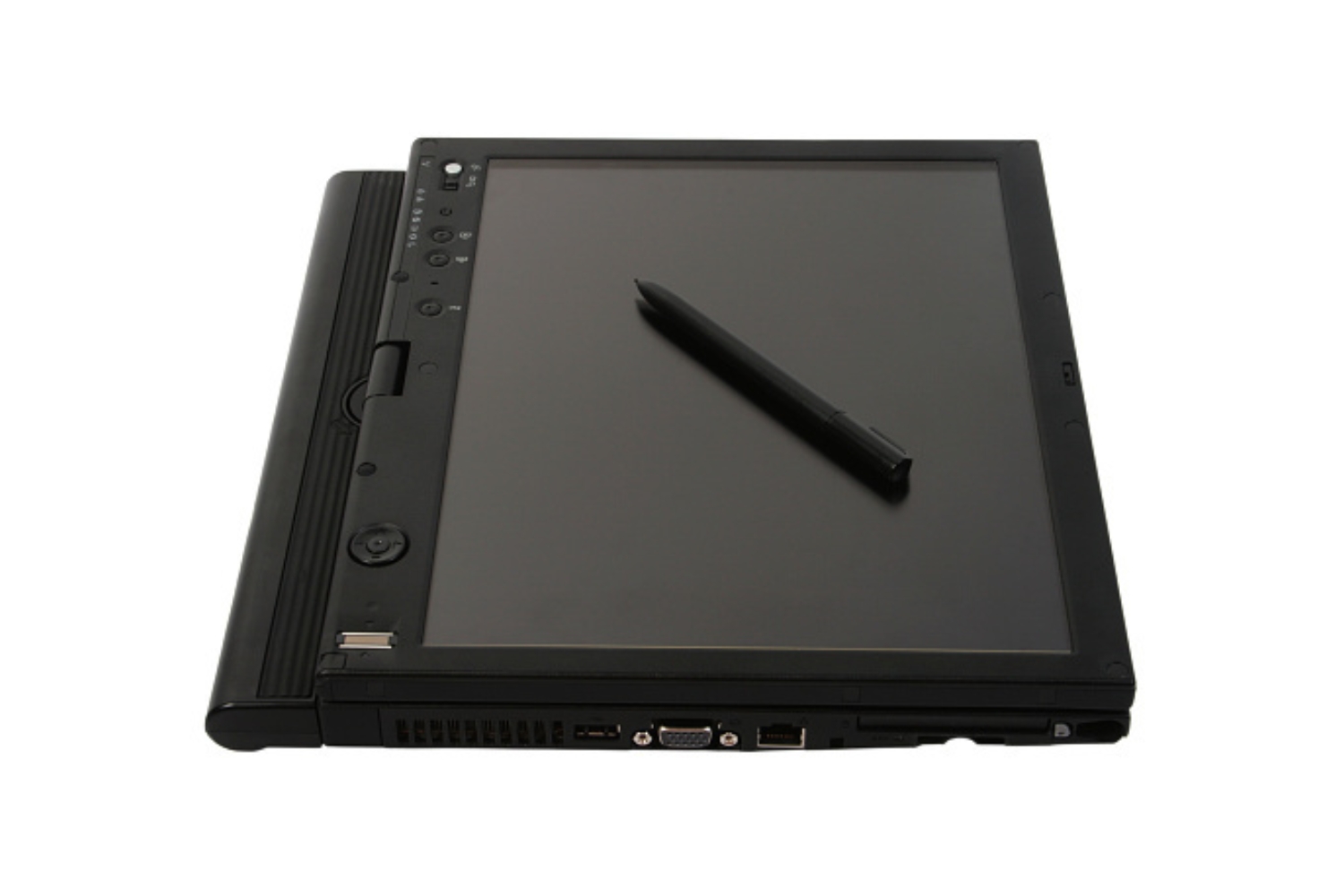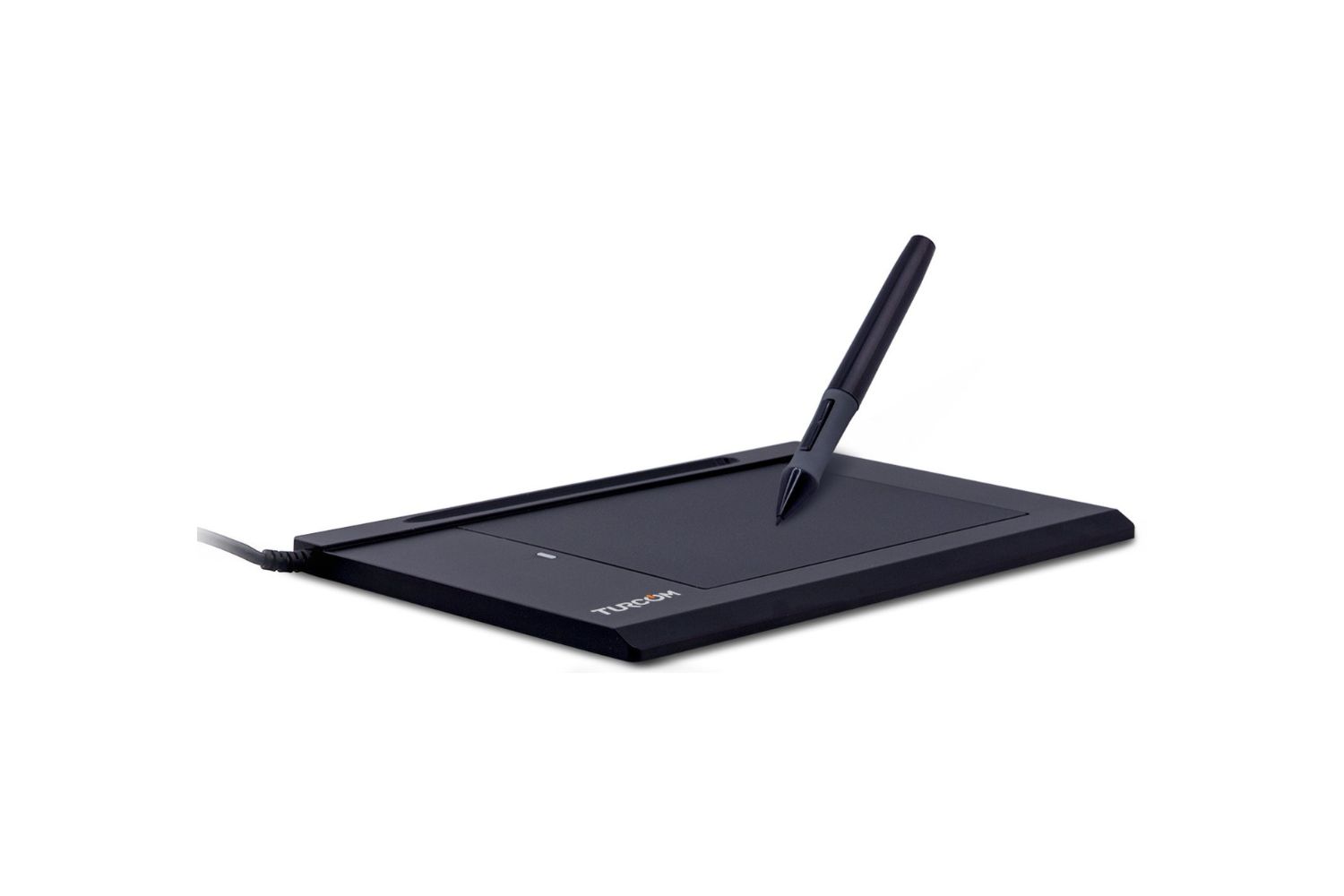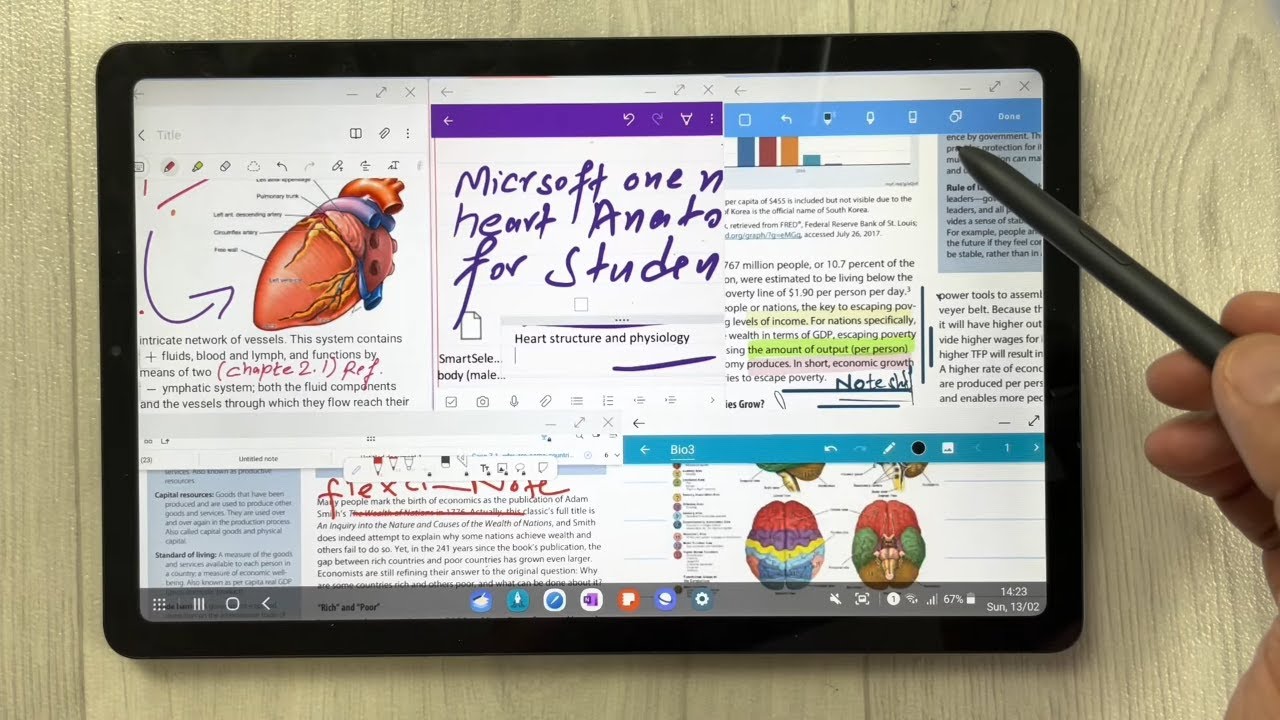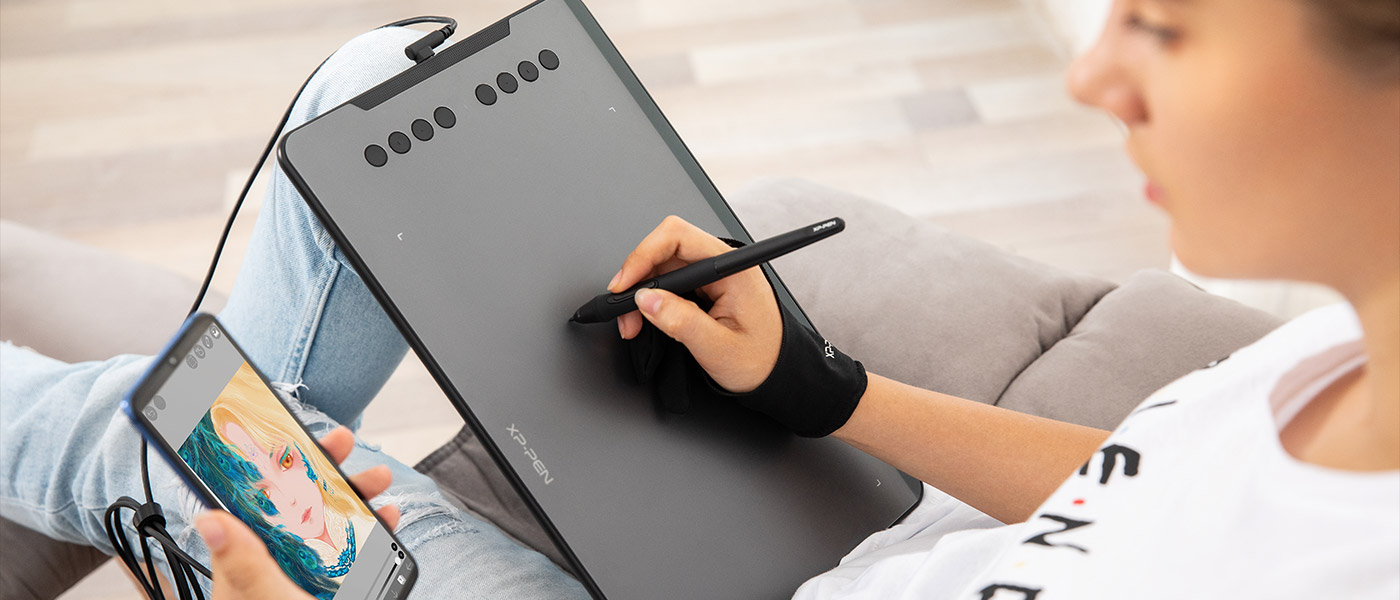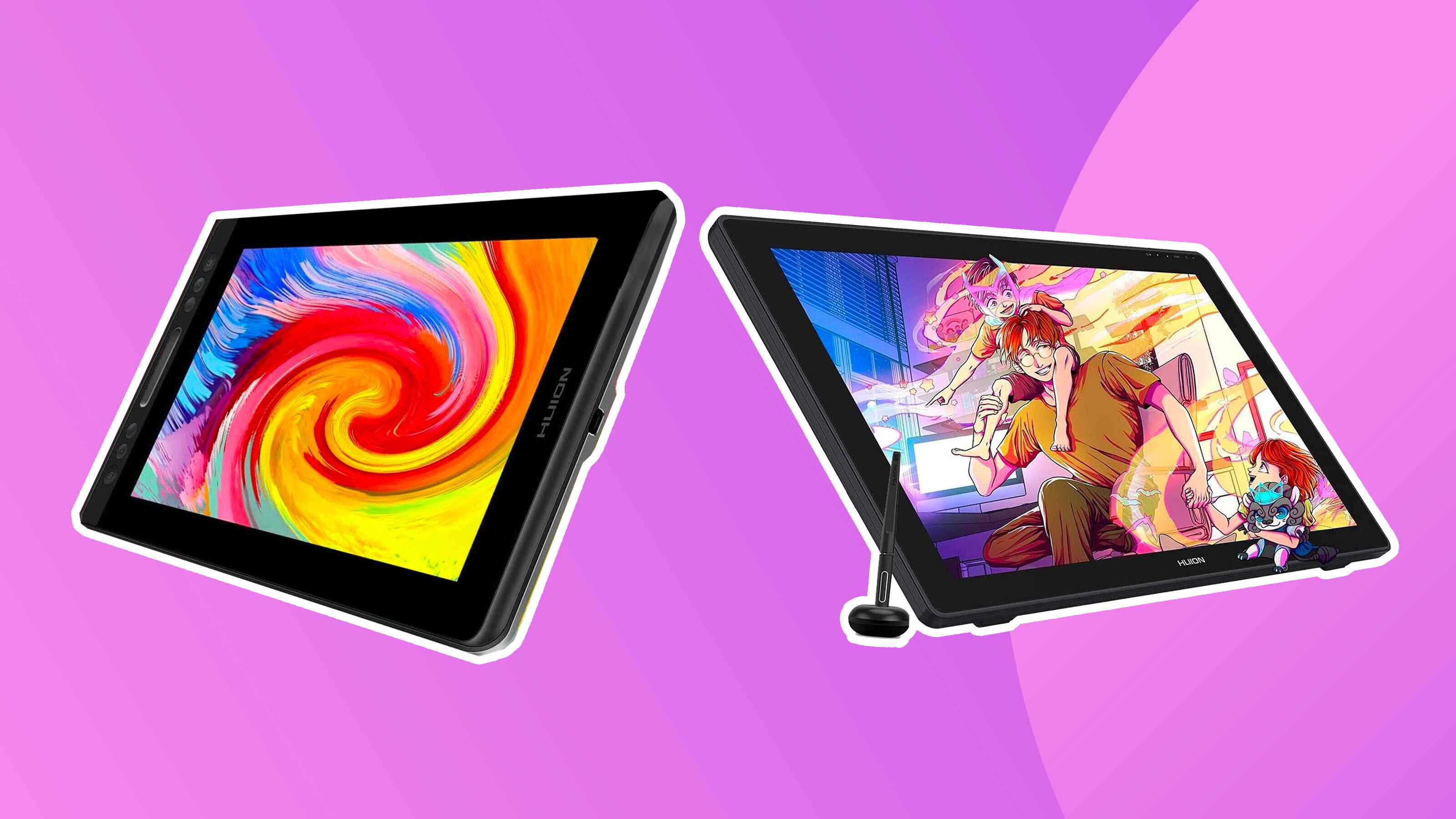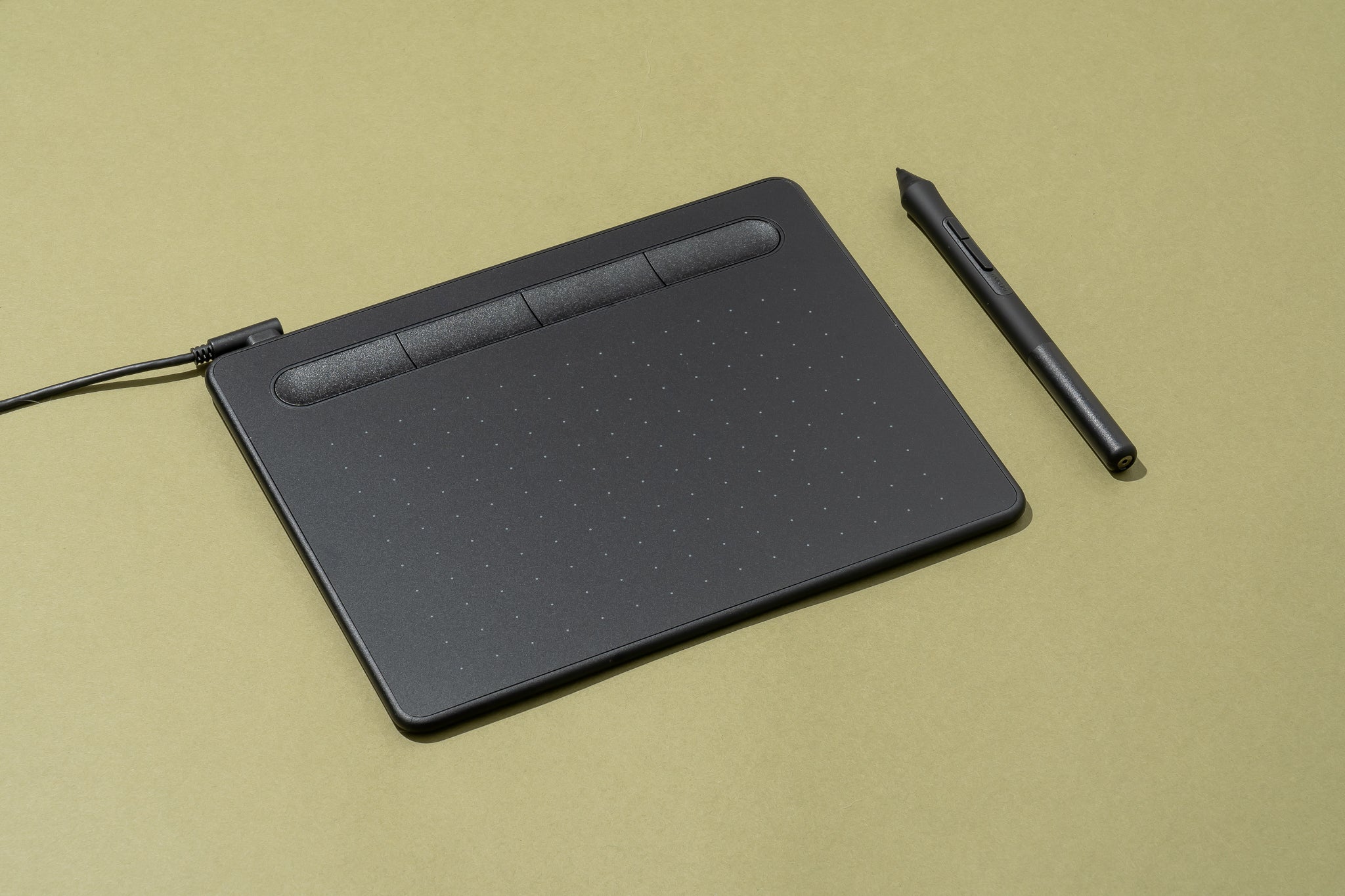Introduction
Welcome to the world of tablets, where touchscreens have revolutionized the way we interact with our digital devices. But have you ever wondered how some tablets offer a more precise and versatile touch experience? That’s where a digitizer comes into play.
A digitizer on a tablet is a crucial component that enhances the user experience by allowing precise input through a stylus or pen. It enables users to draw, write, and interact with their tablets with greater accuracy and control, similar to using a pen or pencil on paper.
In this article, we will explore the concept of a digitizer and its functionality on a tablet. We will delve into the different types of digitizers available, the advantages of having a digitizer on a tablet, common uses for a digitizer, and factors to consider when choosing a tablet with a digitizer.
If you’ve ever been curious about the magic behind the smooth and accurate touch experience on some tablets, read on to discover the fascinating world of digitizers and their impact on tablet technology.
What is a digitizer?
A digitizer is a device or component that converts analog input, such as the movement of a pen or stylus, into digital data that can be processed by a computer or tablet. In the realm of tablets, a digitizer is responsible for accurately capturing the position, pressure, and tilt of a stylus or pen on the tablet’s surface.
Unlike a traditional touchscreen, which detects and responds to simple touches, a digitizer enables more precise input, allowing users to write, draw, and create detailed artwork on their tablets. It essentially bridges the gap between the analog world and the digital world, providing a seamless and intuitive user experience.
Digitizers can use different technologies to detect and capture input. One common type is an electromagnetic digitizer, which relies on an electromagnetic field to track the stylus’s movements. Another type is a capacitive digitizer, which uses the electrical properties of the stylus and the tablet’s surface to determine its position. Both types offer high accuracy and responsiveness, but they differ in terms of their features and compatibility with different pens or styli.
Additionally, digitizers can be integrated directly into the tablet’s screen or overlayed on top of it. Tablets with integrated digitizers are often referred to as “active digitizer tablets,” while those with overlay digitizers are called “passive digitizer tablets” or “digitizer-enabled tablets.”
Overall, a digitizer is a crucial component that enhances the functionality and versatility of a tablet, allowing for precise input and a more natural writing and drawing experience. It opens up a world of possibilities for artists, designers, note-takers, and anyone who values accuracy and control when using their tablet.
How does a digitizer work?
A digitizer on a tablet uses advanced technology to accurately track the movements of a stylus or pen on its surface. The process involves a combination of hardware and software components that work together to capture and interpret the user’s input.
The hardware component of a digitizer typically consists of a grid of sensors embedded in the tablet’s screen or overlay. These sensors detect the precise position of the stylus on the tablet’s surface. The sensors can be based on different technologies, including electromagnetic, capacitive, resistive, or optical, depending on the type of digitizer.
When the user applies pressure with the stylus, the sensors detect changes in the electrical or physical properties and relay this information to the tablet’s software. The software then translates these signals into digital data, recording attributes such as position, pressure, tilt, and even the angle of the stylus.
This digital data is then processed by the tablet’s operating system or specific applications that support digitizer input. The software interprets the data to provide various functionalities, such as drawing, handwriting recognition, and precise cursor control. The tablet accurately replicates the user’s actions on the screen, resulting in smooth and seamless interaction between the user and the digital interface.
Different types of digitizers may have additional features that enhance their functionality. For example, some digitizers support palm rejection, which allows users to rest their palm on the tablet’s surface while using the stylus, without affecting the input. This feature prevents accidental touches and makes the experience more intuitive and comfortable.
Overall, the combination of specialized hardware and software allows a digitizer to precisely capture and interpret the user’s input, offering an enhanced and natural writing and drawing experience on the tablet.
Different types of digitizers
Digitizers come in various types, each utilizing different technologies to capture and interpret input. Understanding the different types can help you choose a tablet that best suits your needs and preferences.
- Electromagnetic digitizers: This type of digitizer uses an electromagnetic field to track the movements of the stylus. It works by generating alternating currents in a grid of wires or sensors embedded in the tablet’s screen. The stylus contains a small coil that interacts with the electromagnetic field, allowing the digitizer to precisely detect its position, pressure, and tilt. Electromagnetic digitizers offer high accuracy, sensitivity, and support for advanced features like pressure sensitivity.
- Capacitive digitizers: Capacitive digitizers use the electrical properties of the stylus and the tablet’s surface to determine its position. They rely on the conductivity of the stylus to create changes in the capacitance of the screen’s electrodes. These changes are then processed by the digitizer to translate them into digital data. Capacitive digitizers are known for their responsiveness and multi-touch capability, allowing for gestures like pinch-to-zoom and swipe.
- Resistive digitizers: Resistive digitizers consist of two layers with a small gap in between. When pressure is applied to the screen, the two layers come into contact, and the digitizer detects the point of contact. Resistive digitizers are less common in modern tablets but are still used in some devices due to their durability and ability to work with any type of input.
- Optical digitizers: Optical digitizers use an array of sensors and cameras to track the movements of the stylus. They analyze the stylus’s position by capturing images of the tablet’s surface and comparing them to a reference image. Optical digitizers offer high precision and can work with various input objects, not just styluses or pens.
It’s important to note that the availability and compatibility of these digitizer types may vary depending on the tablet model and brand. It’s recommended to research and compare different tablets to find one that incorporates the type of digitizer that aligns with your specific needs.
Advantages of having a digitizer on a tablet
Having a digitizer on a tablet offers numerous advantages that significantly enhance the user experience and expand the possibilities for creativity and productivity. Here are some key benefits of having a digitizer-equipped tablet:
- Precision: A digitizer enables precise input, allowing for accurate drawing, writing, and note-taking. It offers finer control and detail than finger-based touch input, making it ideal for artists, designers, and professionals who require precision in their work.
- Pressure sensitivity: Many digitizers offer pressure sensitivity, meaning they can detect varying levels of pressure applied by the stylus. This feature allows for more realistic and expressive drawing experiences, as heavier pressure produces thicker lines or darker shades, while lighter pressure creates thinner lines or lighter shades.
- Palm rejection: Digitizers often come with palm rejection technology, which allows users to rest their palms on the tablet’s surface while using the stylus. This feature prevents accidental touches and provides a more natural and comfortable drawing or writing experience.
- Improved handwriting recognition: With a digitizer, handwriting recognition software can accurately convert your handwritten notes into digital text, making it easier to search, edit, and share your notes. This feature is especially beneficial for students, professionals, and anyone who needs to digitize their handwritten content.
- Enhanced drawing capabilities: Artists can take advantage of the digitizer’s precise input to create intricate artwork on their tablets. With features like pressure sensitivity, tilt detection, and the ability to use different brushes and tools, a digitizer-equipped tablet can serve as a portable and versatile drawing pad.
- Efficient annotation and markup: Digitizers make it easy to annotate and mark up documents, presentations, and images directly on the tablet’s screen. This feature is especially useful for professionals in fields such as architecture, engineering, and education, allowing them to make precise annotations and collaborate effectively.
These advantages demonstrate how a digitizer on a tablet can elevate the user experience and empower individuals in various creative and professional endeavors. Whether you’re an artist, student, or business professional, a tablet with a digitizer opens up a world of possibilities for expression, productivity, and precision.
Common uses of a digitizer on a tablet
The presence of a digitizer on a tablet opens up a wide range of applications and uses that take advantage of the precise and versatile input capabilities it offers. Here are some of the common uses of a tablet with a digitizer:
- Digital art and graphic design: Artists and graphic designers can use a tablet with a digitizer to create digital artwork with precision and detail. The pressure sensitivity and tilt recognition allow for natural brush and pen strokes, making it an excellent tool for digital painting, sketching, and illustration.
- Note-taking and annotation: Students and professionals can benefit from using a tablet with a digitizer for note-taking during lectures, meetings, or brainstorming sessions. The ability to write and draw directly on the tablet’s screen offers a more flexible and interactive note-taking experience, allowing for easy organization and quick access to saved notes.
- Document markup and editing: A tablet with a digitizer is useful for professionals who need to annotate and mark up documents, whether it’s reviewing contracts, editing manuscripts, or providing feedback on design mockups. The precision and ease of use provided by the digitizer enhance the efficiency and accuracy of these tasks.
- Handwriting recognition: With a digitizer, tablets can accurately convert handwritten notes into digital text. This feature is particularly advantageous for individuals who prefer to write by hand but still want the convenience of searchable and editable digital documents.
- Digital signature: A tablet with a digitizer can be used for capturing digital signatures, eliminating the need for printing, signing, and scanning physical documents. This functionality streamlines the signing process, making it more secure and efficient, especially in industries that require frequent document signing.
- Digital sketching and wireframing: Designers and architects can use a tablet with a digitizer to quickly create digital sketches and wireframes. The precision and ease of use make it an ideal tool for exploring ideas, iterating designs, and presenting concepts to clients or colleagues.
- 2D and 3D modeling: Tablets with advanced digitizers can be used for 2D and 3D modeling applications. Architects, interior designers, and product designers can use the tablet’s precise input to manipulate virtual objects, create detailed models, and visualize designs.
These are just a few examples, but the potential uses of a tablet with a digitizer are vast and depend on the individual’s needs and creativity. From art and design to productivity and collaboration, the digitizer elevates the tablet’s capabilities, offering endless possibilities for creative expression, efficient workflows, and interactive experiences.
Factors to consider when choosing a tablet with a digitizer
When selecting a tablet with a digitizer, there are several key factors to consider to ensure you choose a device that aligns with your needs and preferences. Here are some important factors to take into account:
- Type of digitizer: Research and understand the different types of digitizers available, such as electromagnetic or capacitive. Each type has its own advantages and may offer specific features like pressure sensitivity or palm rejection. Consider which type suits the tasks you intend to perform on the tablet.
- Accuracy and sensitivity: Look for a tablet with a digitizer that offers high precision and sensitivity. A more accurate and sensitive digitizer will provide a more natural and fluid writing or drawing experience. However, keep in mind that higher accuracy may come at a higher cost.
- Compatibility: Ensure that the tablet’s digitizer is compatible with the stylus or pen you plan to use. Some tablets may have proprietary styluses, while others may have more universal compatibility. It’s important to check if the tablet supports the specific stylus or pen you prefer or if it comes with a suitable one included.
- Size and weight: Consider the size and weight of the tablet, as these factors can affect portability and comfort during prolonged use. Depending on your intended usage, you may prefer a more compact and lightweight tablet that is easier to carry or a larger tablet with a larger working area for drawing or sketching.
- Battery life: Check the battery life of the tablet, especially if you plan to use it for extended periods or on the go. A tablet with a long-lasting battery will allow you to work or create without interruptions. Consider the tablet’s battery specifications and read reviews to get an accurate idea of its real-world performance.
- Operating system and app compatibility: Consider the tablet’s operating system, such as Android, iOS, or Windows, and ensure that it is compatible with the apps and software you intend to use. Certain creative or productivity apps may have specific requirements or may work better on a particular operating system.
- Budget: Set a budget for your tablet purchase and look for options within that range. Tablets with digitizers can vary widely in price, so it’s important to find a balance between the features and performance you need and your budget constraints.
By considering these factors, you can make an informed decision and choose a tablet with a digitizer that suits your specific requirements. Remember to prioritize the features that are most important to you and consider reading reviews and comparing different models to find the best fit for your needs.
Conclusion
In the world of tablets, a digitizer adds a whole new dimension to the touch experience. It enhances precision, accuracy, and versatility, allowing users to write, draw, and interact with their tablets in a more natural and intuitive way. Whether you’re an artist, student, or professional, a tablet with a digitizer opens up a world of creative possibilities and productivity.
Understanding the different types of digitizers, such as electromagnetic and capacitive, helps in choosing the right tablet that suits your needs. Factors like accuracy, sensitivity, compatibility, size, battery life, operating system, and budget should be considered to make an informed decision.
By having a digitizer on your tablet, you gain the ability to create digital art with precision, take handwritten notes in a more interactive manner, mark up and edit documents effortlessly, and so much more. The digitizer expands the functionality of the tablet, making it a powerful tool for artists, designers, students, and professionals alike.
As technology advances, digitizers continue to evolve, offering even greater levels of accuracy, pressure sensitivity, and advanced features. Whether you’re a digital artist seeking a canvas-like experience or a professional looking to streamline your workflow, a tablet with a digitizer can be the perfect tool to unleash your creativity and boost your productivity.
Explore the world of digitizer-enabled tablets, consider your specific needs and preferences, and choose a tablet that will empower you to take your digital experiences to the next level. With a digitizer-equipped tablet in hand, the possibilities are endless.







